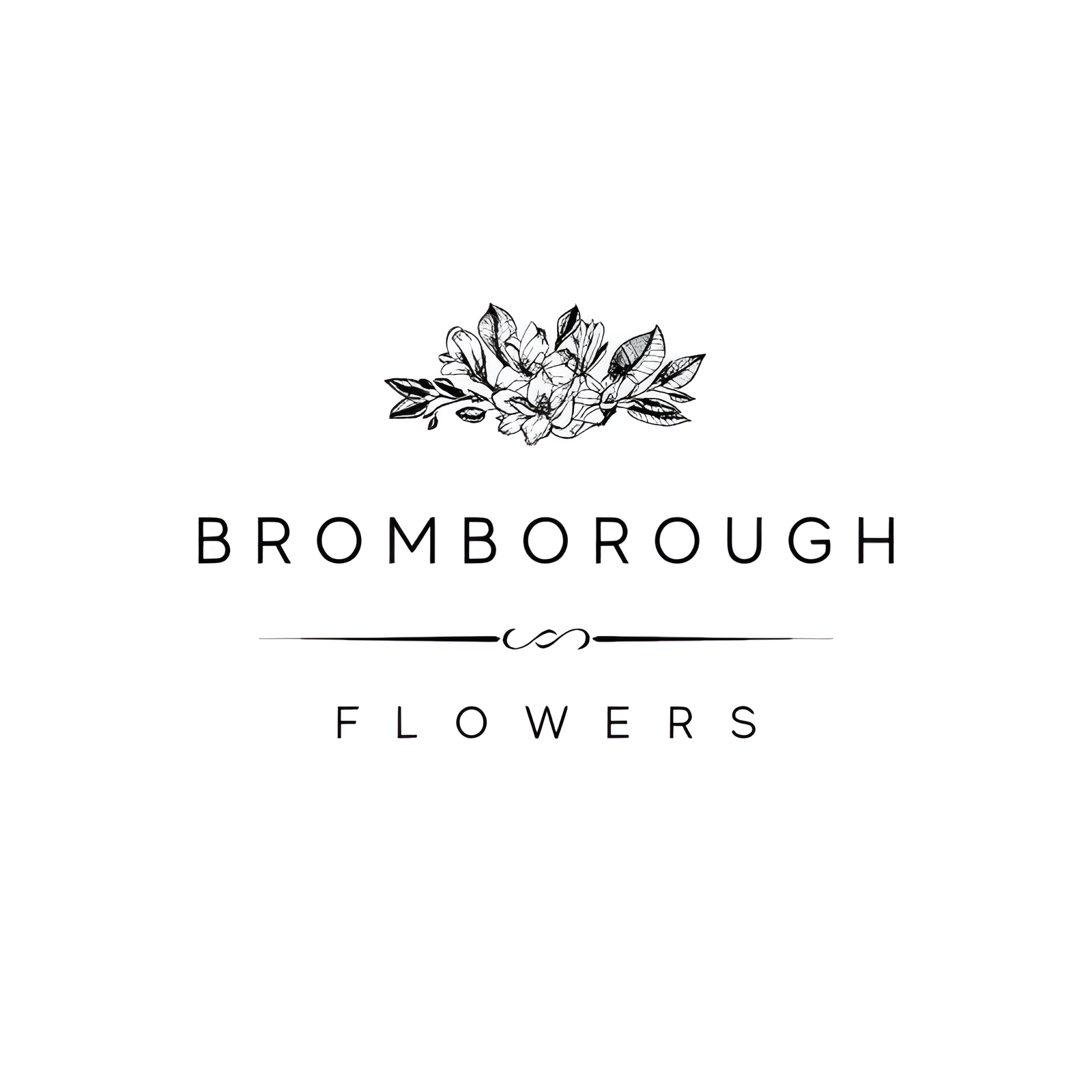When planning the floral elements of a wedding, the Carnation emerges as a standout choice due to its ruffled petals, robust stems, and array of color options. Beyond its aesthetic appeal, the Carnation holds rich symbolic meanings associated with love and fascination, making it a deeply meaningful addition to bridal bouquets, centerpieces, and other wedding decor. Its affordability and long vase life further enhance its practicality. As we explore the various aspects of this versatile flower—from its cultural significance to its best growing conditions—you’ll discover why Carnations could be the ideal choice for your wedding.
Flower Overview
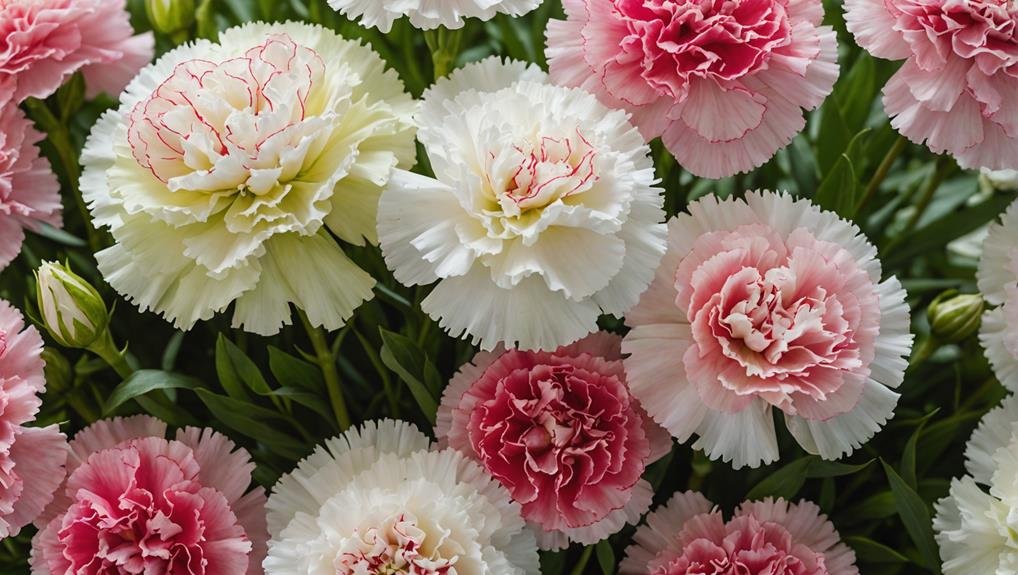
Carnations, also known as grenadine, dianthus, and clove pink, are fragrant flowers distinguished by their fringe petals and tall stems. These versatile flowers are a popular choice for various floral arrangements, including weddings, due to their availability in a multitude of colors and their ability to symbolize deep meanings.
From vibrant reds representing love and affection to pure whites symbolizing luck, carnations offer a broad spectrum of hues to match any wedding theme or color scheme.
As a versatile flower, carnations can be incorporated into bridal bouquets, centerpieces, and boutonnieres, adding both beauty and fragrance to wedding celebrations. Their sturdy stems and long-lasting blooms make them an ideal choice for events requiring durable flowers that can withstand a full day of festivities. Additionally, the variety of carnation types available, from border to garden varieties, allows for creative and diverse floral designs.
In particular, carnations hold a special place in Chinese weddings, where they are the most popular flower choice. Their significance extends to U.S. Mother’s Day celebrations, further underscoring their widespread appeal and cultural importance.
Physical Description
Characterized by their ruffled, fringed petals and sturdy, elongated stems, carnations present an elegant and distinctive appearance. These features make carnations an excellent choice for various floral arrangements, particularly in Carnation wedding bouquets. The petals exhibit a layered, textured look that adds depth and volume, enhancing the aesthetic charm of any bridal bouquet.
Carnations are known for:
- Ruffled Petals: The fringed edges of the petals create a soft, romantic feel, perfect for wedding settings.
- Robust Stems: Their strong stems ensure longevity, making them ideal for long-lasting arrangements.
- Variety of Colors: Available in a wide range of natural and dyed hues, carnations offer versatility for matching any wedding theme.
This versatile bloom not only adds visual interest but also symbolizes love and fascination, aligning perfectly with the sentiments of a wedding day.
The tall stems allow for graceful, elegant arrangements, whether in a simple bouquet or a more elaborate display. Additionally, the flower’s ability to be dyed expands its potential uses, confirming it can complement any color scheme.
The carnation’s physical attributes contribute significantly to its popularity and functionality in wedding decor.
Available Colour Varieties
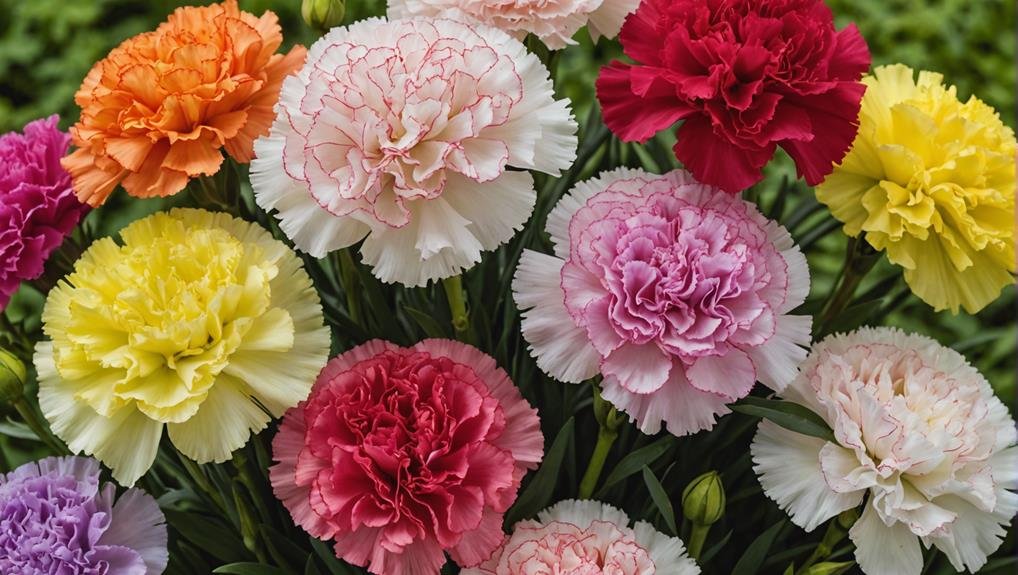
Exploring the wide range of available color varieties, carnations offer an exceptional palette for creating personalized and meaningful wedding floral arrangements. Renowned for their versatility, carnations are available in every color naturally and can also be dyed, providing a wide variety of options to suit any wedding theme or color palette.
White carnations are a popular choice, symbolizing luck and purity, which makes them ideal for bridal bouquets and other ceremonial arrangements. Pink carnations, available in different shades, convey affection and admiration, making them a sentimental choice for wedding decorations and floral gifts. The extensive array of hues, from delicate pastels to vibrant tones, allows for creative and bespoke floral designs.
Carnations are not limited to just pink and white; they come in a spectrum of colors such as red, yellow, orange, and even green. Each color carries its own symbolic meaning, enabling couples to infuse personal significance into their floral arrangements. Additionally, the hundreds of different carnation varieties available guarantee that there is a perfect match for every wedding style and preference, whether traditional or contemporary.
This extensive color variety makes carnations an incredibly versatile and beloved choice for weddings.
Latin Name and Taxonomy
Scientifically known as Dianthus caryophyllus, carnations belong to the Caryophyllaceae family, highlighting their botanical classification and heritage. These flowers are a prominent part of the genus Dianthus, a group that encompasses approximately 300 species.
The term ‘Dianthus’ itself is derived from the Greek words ‘dios,’ meaning divine, and ‘anthos,’ meaning flower, which aptly reflects the splendor and revered status of these blooms.
Carnations, or Dianthus caryophyllus, are recognized for their fragrant flowers and are commonly referred to by other names such as clove pink and grenadine. This nomenclature underscores their historical and cultural significance, spanning various traditions and uses.
As herbaceous perennial plants, carnations are known for their enduring qualities, making them a popular choice for weddings and other special occasions.
To summarize the taxonomy and classification of carnations:
- Family: Carnations are part of the Caryophyllaceae family, which includes a wide variety of flowering plants.
- Genus: They belong to the genus Dianthus, which contains around 300 different species.
- Plant Type: Classified as herbaceous perennial plants, they are valued for their lasting blooms and aromatic appeal.
Understanding these botanical details helps in appreciating the rich legacy and enduring charm of carnations.
Geographical Origins
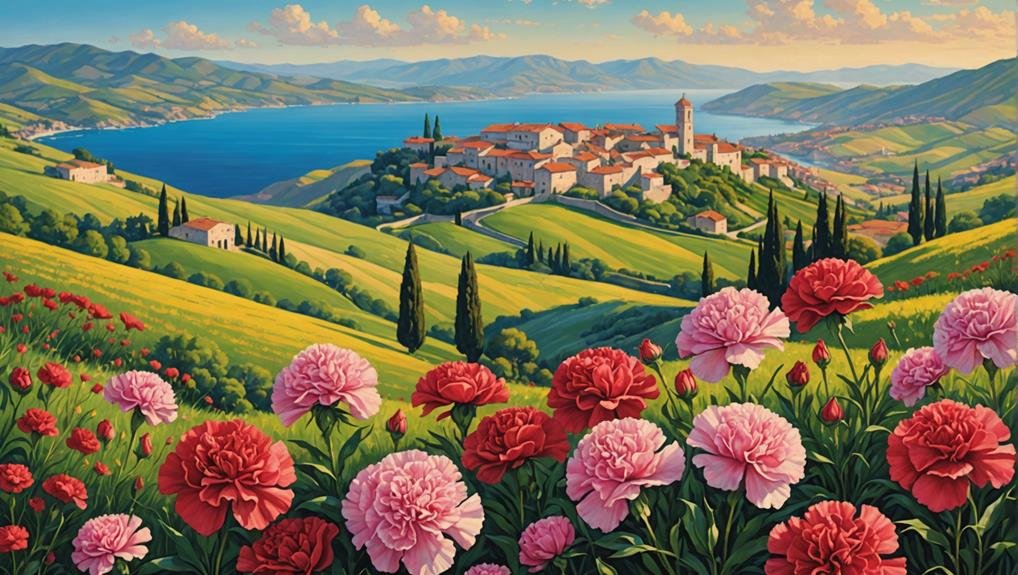
Native to the Eurasian landscape, carnations boast a history of cultivation that spans over 2,000 years, with significant growth in regions such as Spain, Italy, and Japan. The geographical origins of carnations are deeply rooted in the Mediterranean region, where temperate climates and well-drained soil create ideal growing conditions. This region’s climate, characterized by mild, wet winters and hot, dry summers, provides the perfect environment for these resilient flowers to thrive.
Carnations have adapted exceptionally well to various growing conditions, broadening their cultivation far beyond their Mediterranean beginnings. Their ability to flourish in temperate climates has facilitated their widespread popularity, making them a staple in global horticulture. Countries like Spain and Italy continue to be significant producers, benefiting from the flower’s historical and cultural significance. Japan, with its own temperate climate, also sees substantial carnation cultivation, blending traditional symbolism with modern horticultural practices.
The rich symbolism associated with carnations dates back to ancient times, where they were often linked to love, fascination, and distinction. This historical context, combined with their diverse geographical origins, underscores the enduring appeal of carnations in both traditional and contemporary floral arrangements.
Season Availability
Due to their broad seasonal availability, carnations are a versatile choice for weddings, often in peak bloom from spring through summer. This wide range makes them an attractive option for couples planning their nuptials during these months.
However, their utility extends beyond just spring and summer. Carnations boast a long vase life, ensuring that they remain fresh and vibrant throughout the event, regardless of the season.
Their resilience in various climates further enhances their appeal. Hardy carnations can bloom in fall or winter in certain regions, offering brides the flexibility to incorporate these flowers into their arrangements year-round. This adaptability makes carnations a resilient choice for weddings in different weather conditions and geographical locations.
Carnations are also available in a variety of different colors, allowing for creative and personalized floral designs. Here are some key points regarding their season availability:
- Spring to Summer: Peak blooming season, making carnations readily available and vibrant.
- Year-Round Options: Hardy varieties can bloom in fall or winter, providing options for off-season weddings.
- Versatility: Long vase life and availability in various colors enhance their suitability for all seasons.
Growing Conditions
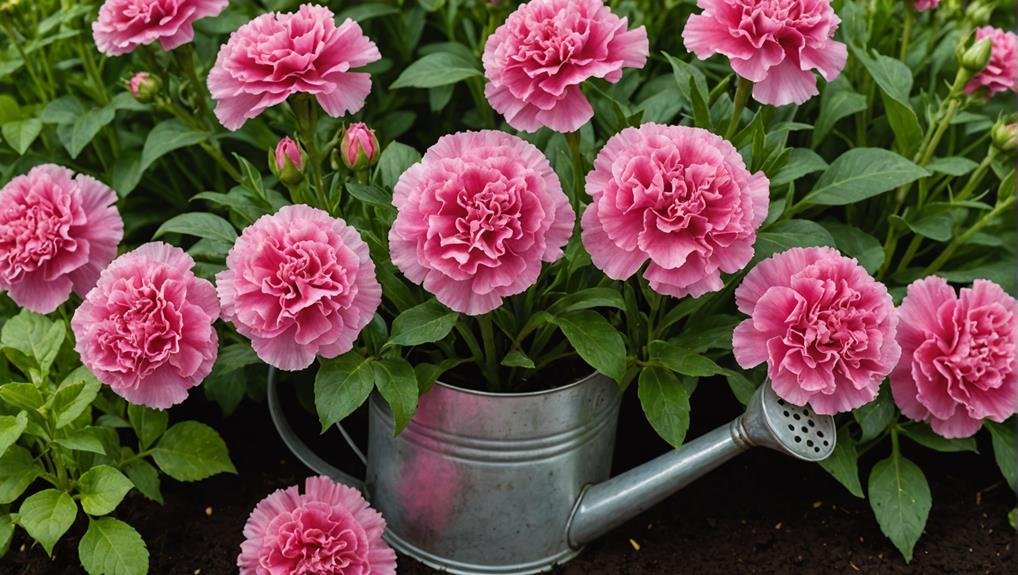
Carnations thrive in well-draining soil and need full sunlight exposure to achieve their best growth. These flowers flourish in conditions where they receive at least six hours of direct sunlight daily. The ideal soil for carnations is loose and well-aerated, allowing for proper drainage to prevent waterlogging, which can lead to root rot. Making sure that the soil has good drainage capabilities is essential to maintaining healthy plants.
In terms of temperature, carnations prefer cooler environments, with optimal growth occurring between 50-65°F. These growing conditions help the plants develop strong, vibrant blooms. Regular watering is vital for carnations, but it is important to avoid overwatering. The soil should be kept consistently moist but not soggy, as excessive moisture can cause fungal diseases.
Proper air circulation around the plants is another key factor in maintaining healthy carnations. This helps reduce the risk of fungal infections and encourages robust growth. Additionally, regular deadheading, or the removal of spent flowers, is beneficial for promoting continuous blooming throughout the growing season.
Cultural Significance
Beyond their growing requirements, carnations hold profound cultural significance, symbolizing love, devotion, and positive sentiments across various traditions worldwide. These versatile flowers have been cherished for centuries, not only for their beauty but also for their rich symbolic meanings that resonate deeply in diverse cultural contexts.
- Chinese Weddings: Carnations are the most commonly used flower in Chinese weddings, symbolizing good luck and prosperity. Their vibrant hues and enduring nature make them a favored choice to bless newlyweds with a prosperous future.
- Mother’s Day in the U.S.: In the United States, carnations are emblematic of Mother’s Day, representing love and admiration for mothers. This tradition underscores the flower’s association with familial devotion and gratitude.
- Dianthus Symbolism: The scientific name, Dianthus, translates to ‘flower of love’ or ‘flower of the gods,’ reinforcing its deep-rooted connection to love and affection. This classical symbolism makes carnations an ideal choice for wedding bouquets, as they embody the positive meanings of love, fascination, luck, and good fortune.
Incorporating carnations into wedding bouquets not only enhances their aesthetic appeal but also imbues the ceremony with layers of cultural traditions and positive meanings, making them a timeless and meaningful choice.
Typical Use in Weddings
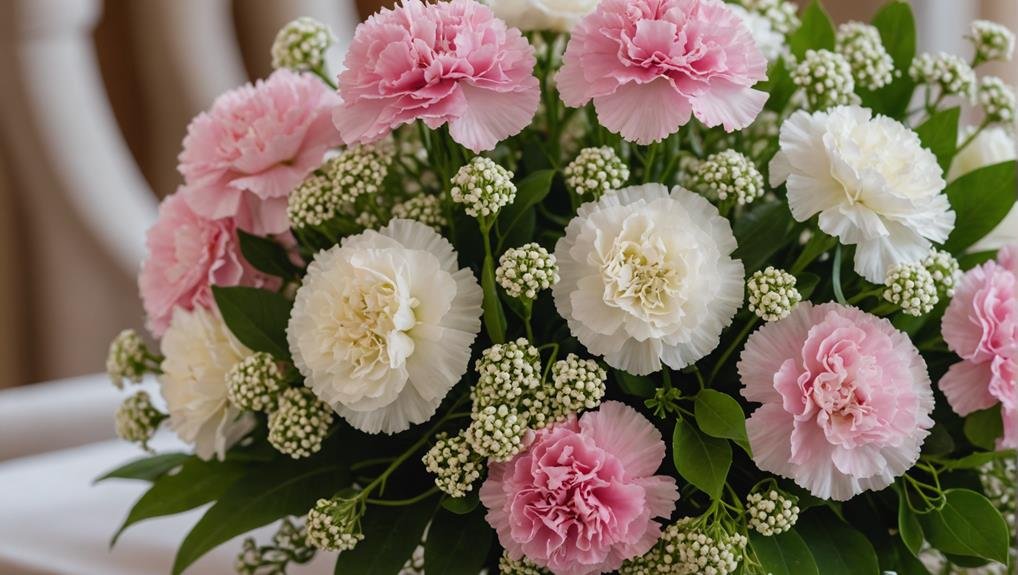
In wedding ceremonies, carnations are frequently chosen for their symbolic meanings and versatility. Known for symbolizing love, luck, and purity, carnations make an ideal choice for various wedding flowers, catering to different aspects of the event. Their availability in a wide range of colors further enhances their appeal, allowing couples to select shades that best signify their emotions and intentions for their special day.
Bridal bouquets often feature carnations, as their resilience and affordability make them a practical yet beautiful option. The blooms can stand alone or be mixed with other flowers to create lush, vibrant arrangements. Additionally, carnations are a popular choice for centerpieces, providing a stunning visual impact while maintaining an elegant and cohesive look throughout the venue.
Boutonnieres and corsages also benefit from the inclusion of carnations. Their sturdy petals and long-lasting nature guarantee they remain fresh and visually appealing throughout the event. Boutonnieres crafted with carnations can add a touch of sophistication to the groom’s attire, while corsages featuring these blooms can adorn the wrists or dresses of mothers and grandmothers, enhancing their overall elegance.
Carnations’ versatility and symbolism make them a lasting favorite in wedding florals.
Alternative Flower Types
Exploring alternative flower types can enrich wedding floral arrangements with diverse aesthetics and deeper symbolic meanings. While carnations offer their own charm, integrating other flowers can amplify the visual and emotional impact of wedding bouquets.
Consider the following alternative flower types:
- Roses: Universally recognized as symbols of love and passion, roses are a timeless choice for wedding bouquets. Their classic beauty and wide variety of colors make them versatile and appealing for any wedding theme.
- Lilies: Representing purity and devotion, lilies bring an elegant and sophisticated touch to floral arrangements. Their distinct shape and fragrance can add a serene yet striking element to your bouquet.
- Dahlias and Peonies: For those seeking a bold and vibrant look, dahlias are an excellent option. Their intricate petals and rich colors make them stand out. On the other hand, peonies, known for their lush, full blooms and soft texture, symbolize romance and prosperity, making them a favorite for many brides.
Combining these alternative flower types with carnations can create a diverse and visually appealing bouquet, marrying tradition with contemporary elegance. Each flower brings its unique charm, ensuring a memorable and meaningful floral arrangement for your special day.
